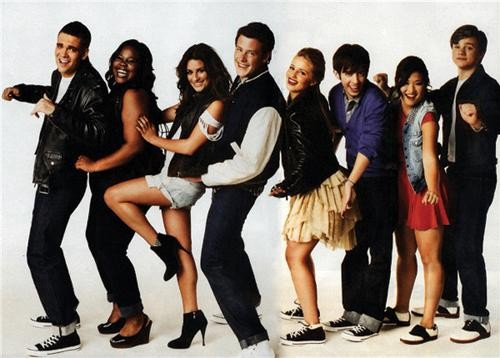I first heard the shocking news about “”Glee”” a few days ago. Although the hit series has been commissioned for both a third and fourth season, co-creator Ryan Murphy has decided to ditch many fan-favorite characters in order to maintain the show’s completely realistic portrayal of American high schools.
In a recent interview with the Hollywood Reporter, Murphy explained his reasoning: “”You can keep them on the show for six years and people will criticize you for not being realistic, or you can be really true to life and say when they started the show they were very clearly sophomores and they should graduate at the end of their senior year,”” Murphy said.
At first, I thought that the show deserved some credit for making such a tough decision. But that was before I realized something: Has the show ever worried about being “”realistic”” before?
Well, let’s see. “”Glee”” follows the story of a high school glee club, who (although the fact that they’re in a show choir gives them reason to sing) are just waiting to burst into perfectly harmonized song and prearranged choreography at any given moment. They must compete with Sue Sylvester (Jane Lynch), a cheerleading coach who is probably insane and spends millions of dollars risking the lives of her precious cheerleaders, the “”Cheerios.”” And of course, for some reason, Coach Sylvester is the meanest person in the world. She spends most episodes yelling at everyone with a megaphone and plotting new ways to quite literally ruin the life of glee club coach Will Schuester (Matthew Morrison).
Here’s the thing. I’m not hating on the show, per se. True, I can’t stand the overly poppy tunes, excessively bright colors and outrageously unrealistic dialogue. But all those things exist for a reason, and there’s a time, place and audience for them. That’s because by its very nature, “”Glee”” is a caricature of sorts. I’m pretty sure that every overblown stereotype and farfetched chain of events is supposed to be ridiculous, in order to satirize some of the many cultural misconceptions about being a teenager in America today. This rubs many people the wrong way, but at the same time, also keeps many other people tuning in week after week.
So sure, Rachel (Lea Michele) is an annoying, bratty, hobbit-sized soprano. And Finn (Cory Monteith) is a shy and awkward quarterback who’s as dumb as a box of rocks. But still, no matter how unrealistic these characters and their show’s plot may be, it is the talent of these actors and the hilarity of their caricatures that keeps people interested in the show — which brings me back to where this began.
Why is Ryan Murphy so concerned about being realistic in a show that people have grown to love simply because it’s so ridiculous? What will happen when the show loses the insanely talented Broadway star Lea Michele? (If you’re thrown by the amount of auto-tuning that “”Glee”” does, search online for her performance as Wendla in “”Spring Awakening.”” She really is talented. It’ll blow your mind.)
I really can’t say what this will mean to the show in the future. Maybe “”Glee”” could benefit from some fresh cast members. Or maybe it won’t. Maybe reality is just too dark for the bright lights of pseudo-high-school Broadway, and this decision could kill all the pop and spunk that the show has worked so hard to achieve.
— Miranda Butler is the arts editor of the Summer Wildcat. She can be reached at
arts@wildcat.arizona.edu.









